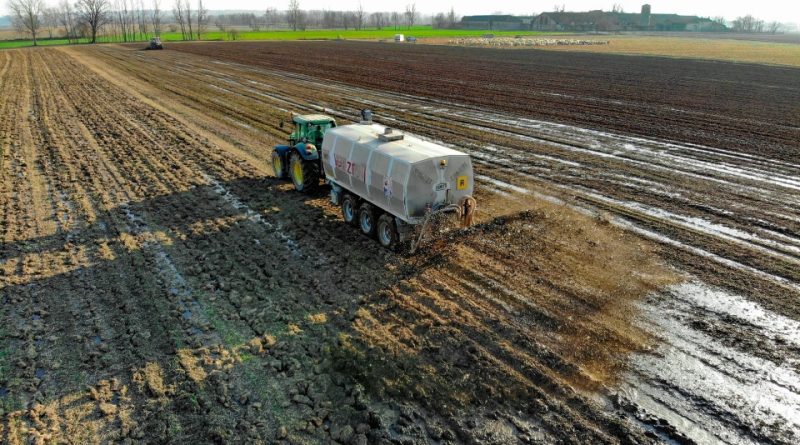Use of fertilizers and climate-changing emissions
Use of fertilizers and climate-changing emissions
With the advent of modern agriculture, the use of fertilizers has undergone a significant increase. While on the one hand this trend has allowed an increase in production yields, it has however had multiple consequences both for the structure and microbiology of the soils but also for climate-altering emissions.
Recently, a study by the University of Cambridge conducted research to identify the best strategies for reducing greenhouse gases deriving from the use of natural and chemical fertilizers.
In summary, the study, as will be explained below, indicates that by 2050 emissions from the use of fertilizers can be cut by 84%.
To obtain this important result, it will be necessary to have a more efficient use of the decarbonisation process.
But let’s take a step back. Currently, emissions from fertilizers are around 2.6 GtCO2e per year, i.e. 5-6% of the global total.
Such a quantity that, if compared in terms of surface area, they represent a pollutant contribution equal to almost the same amount of pollution every year as the whole of Europe.
To drastically reduce this effect, with obvious negative effects also on planetary crops (see increase in temperatures and difficulty in adapting some crops), it is necessary to change some strategies in the use of these substances.
The reduction up to the value of 84% by 2050, as verified by a study by the University of Cambridge (appeared in Nature food) is only possible with the use of technologies that are already available. So nothing revolutionary or technologically unattainable.
According to the university, there are two keys to obtaining this result, but in the following article we will see that there is a third one that we will address at the end.
Regarding the first two keys, you need to obtain:
– more efficiency in the use of nitrogenous fertilisers;
– decarbonisation of production processes.
The Cambridge study was able to verify that about two thirds of fertilizer emissions occur after their use in crops.
Increasing efficiency in the use of nitrogen is the most effective strategy for reducing emissions. However, this strategy should be combined with the decarbonisation of fertilizer production.
Synthetic nitrogen fertilizers, whether they are organic or inorganic, i.e. synthetic, once in the soil, are digested by the microbial agents present in the soil. The process releases large quantities of nitrogen oxide (N2O), a gas that has a climate-altering power 300 times greater than that of CO2. Fertilizer, the study notes, has twice the emission rate of other synthetic products and is therefore not a good strategy for mitigating fertilizer emissions.
The strategy is to increase the efficiency in the use of these fertilizers. Today the global average stops at 42%; this means that you need to use strategies that favor a more punctual use. In addition to reducing it in absolute terms: one of the problems is that more nitrogen fertilizer is used today than the plants are able to take (in Italy the average is 67 kg too much for each hectare of land, which also negatively affects farmers pocket).
There are a few techniques to improve this efficiency:
– adequate irrigation;
– the selection of crops able to make better use of nitrogenous fertilisers;
– the application of the right fertilizers at the right rate, at the right time and in the right place (also through precision agriculture).
According to the study, this affects 2/3 of the total emissions of fertilizers.
Furthermore, to maximize the reduction of greenhouse gases it will be necessary to act on the production side. The use of renewable hydrogen to obtain ammonia, the basis for fertilizers, would become crucial in this area. To this must be added a more massive use of clean energy in the various stages of production and application.
But the reduction of these emissions will tend to zero when our agricultural system gradually converts to agroecology, i.e. a production system that also implements adequate irrigation, selection of crops that make better use of fertilizers, increase in company biodiversity, etc.
For those who are not yet familiar with this new branch and system of the way of producing food, raw materials, substances and other ecosystem services, it must be said that agroecology, by emulating the same basic principles of natural ecosystems, activates production systems with thermodynamic cycles more closed, i.e. models of production efficiency where the raw materials for the production cycle are mostly obtained within the same company.
As is known from physics, more closed thermodynamic systems have greater process efficiency (including primary productivity) and therefore also less climate-altering.
The Farm to Fork strategy is in fact the new European frontier which will allow, when perfectly applied, a drastic, albeit progressive application of these principles.
Meanwhile already in Sicily the L.R. 21 of 2021 “Provisions on agroecology, the protection of biodiversity and Sicilian agricultural products and technological innovation in agriculture…” is already moving in the direction of these principles, linked to precision agriculture. While waiting for the implementing decree to be issued shortly, a new season opens for agriculture, hoping that a true green revolution will begin from the center of the Mediterranean, certainly more on a human and nature scale than the previous one in the 1960s. last century.
Guido Bissanti

